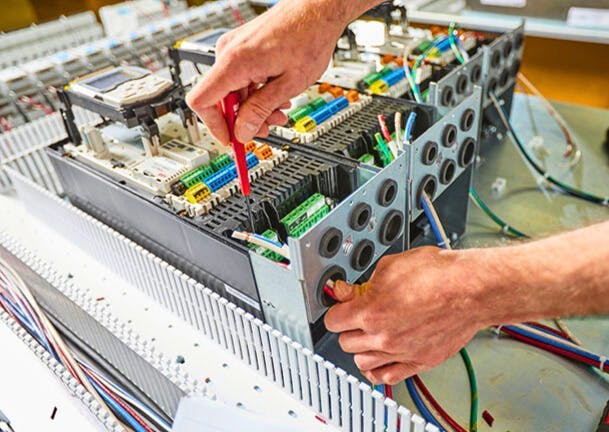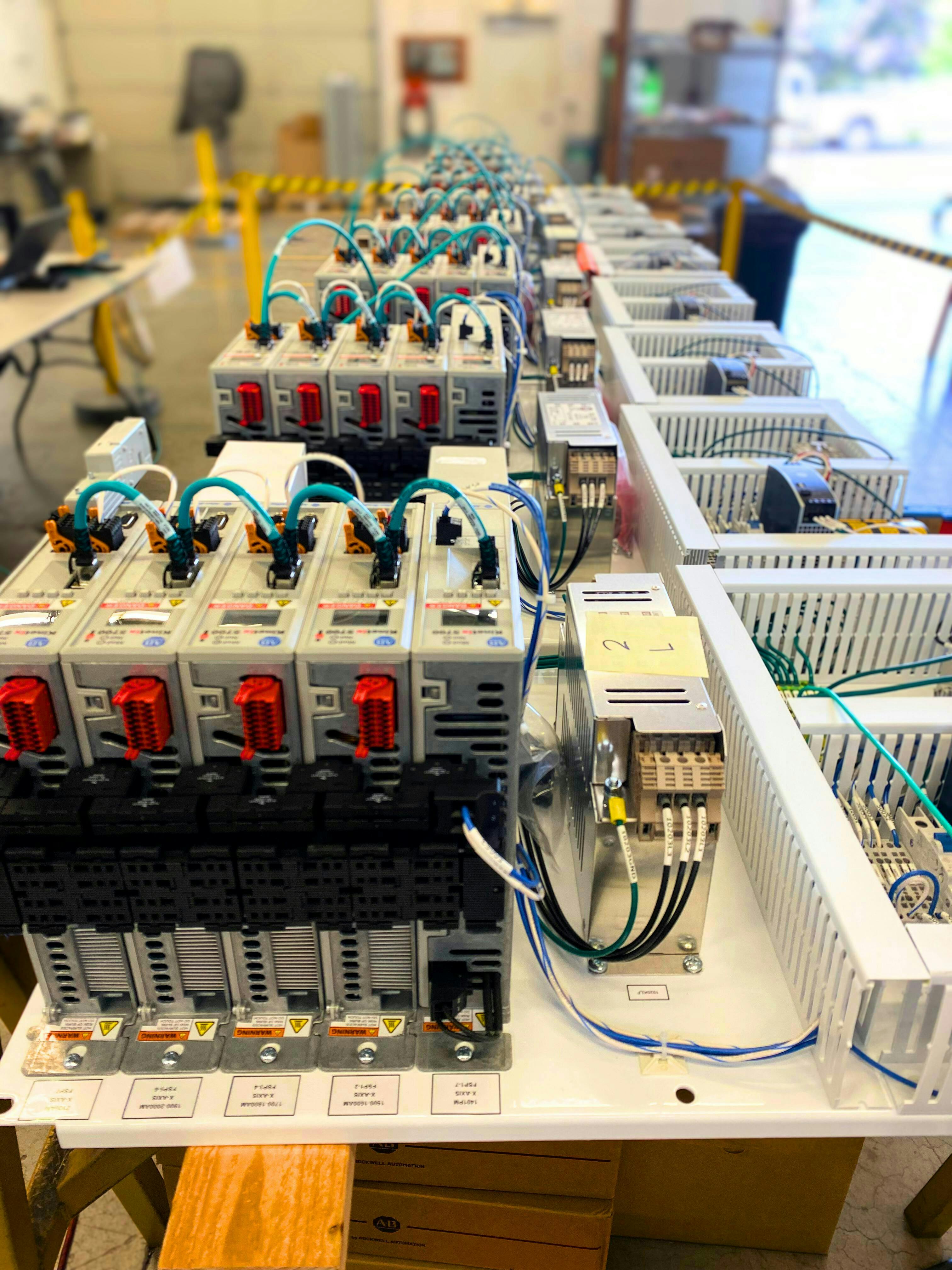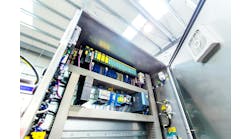Michael Blass, design team manager, Concept Systems: One of the biggest threats to system reliability is the integrity of the interconnect hardware. Sharp edges, burrs and even minor vibrations in machinery can lead to the premature failure of cable and wire insulation. This is why proper routing and effective strain relief techniques are critical—they help protect the cables from these potential hazards. Equally important is accurate bundling and clear labeling (Figure 2). Proper labeling ensures that if a cable or wire causes issues, it can be quickly identified at both ends, making troubleshooting faster and more efficient. Additionally, it aids in aligning the physical wiring with the design documentation, reducing the risk of errors during maintenance or modifications.
Can you explain the different types of termination devices and the best applications for each?
Michael Blass, design team manager, Concept Systems: There are several categories of termination methods for panel wiring, but they generally fall into two main types: screw clamp and spring cage. While there are various versions within each category, these two styles are the foundation of most termination methods.
Screw termination, which has the longest history, involves securing the wire by torquing it to a specific pressure to prevent it from loosening over time. This method requires the use of calibrated torque drivers, adding both cost and time—not just in the initial procurement, but also in the ongoing maintenance of the tools. While screw clamps have been reliable for decades, they can be less efficient and more labor-intensive.
In contrast, spring cage technology is becoming increasingly popular due to its ease of use and resilience in high-vibration environments. Unlike screw clamps, spring cage terminals do not require specific torque, making them more straightforward to install. A version of this technology, known as push-in terminals, further simplifies the process. With push-in terminals, no special tools are needed—wires of a certain minimum size can be directly inserted into the spring cage, and removal is as simple as pressing a button. The only caveat is that push-in terminals require the use of wire end ferrules. However, this is often not an issue since many customers already mandate the use of ferrules for all terminations.
Overall, the choice between screw clamp and spring cage methods depends on the specific application requirements, including factors like vibration levels, ease of maintenance and the need for specialized tools.
Considering the increasing complexity of machinery and the critical role of control panels, how can you effectively balance the demand for faster time-to-market with the need for robust, long-lasting control panels?
Michael Blass, design team manager, Concept Systems: In today's fast-paced, just-in-time manufacturing environment, we achieve success by leveraging standard designs that incorporate built-in flexibility. One key approach is the inclusion of 20% spare I/O points and additional space in control panels, along with slightly oversized variable-speed motor controllers. This strategy reduces the level of detail required during the design phase and enables the early procurement of long-lead-time components.
The provision of spare I/O points and additional space offers significant advantages, such as the ability to accommodate future expansions, updates and adaptations to evolving regulations. By planning for these contingencies upfront, we ensure that the control panels remain robust and adaptable over time.
Similarly, slightly oversizing
variable-frequency drives (VFDs) and servo drives, within reason, provides crucial benefits. It allows for motor sizing to be finalized later in the design cycle, offering flexibility during development. Additionally, these oversized components are better equipped to handle the demands of aging motors that may operate continuously at the higher end of their ampacity range, reducing the risk of premature failure and extending the overall lifespan of the control panel.
By balancing the need for speed with thoughtful design considerations, we can deliver control panels that meet the demands of rapid time-to-market while maintaining the durability and reliability required for long-term performance.
What are the most effective methods for standardizing panel design and components while maintaining flexibility to accommodate diverse machine requirements?









